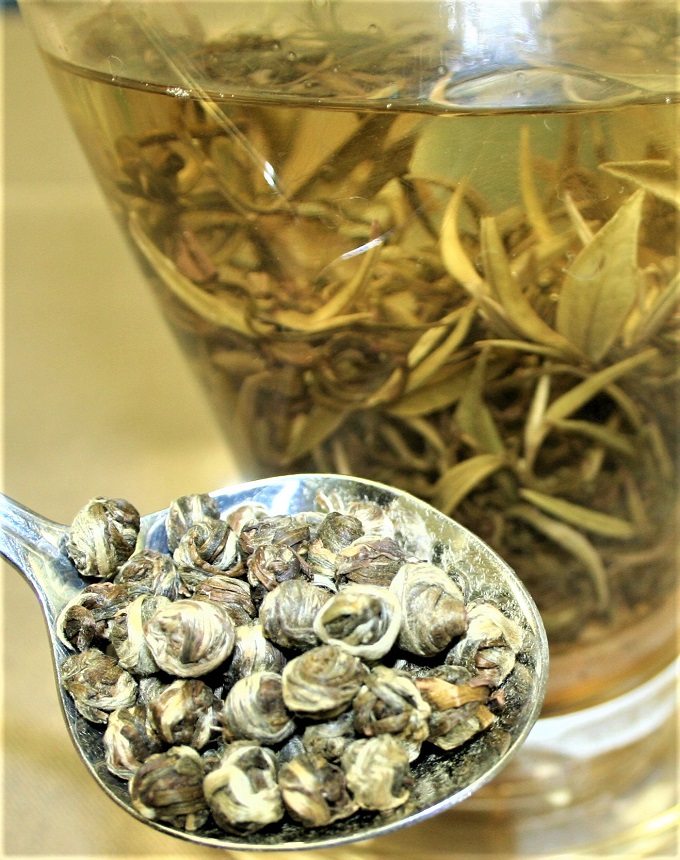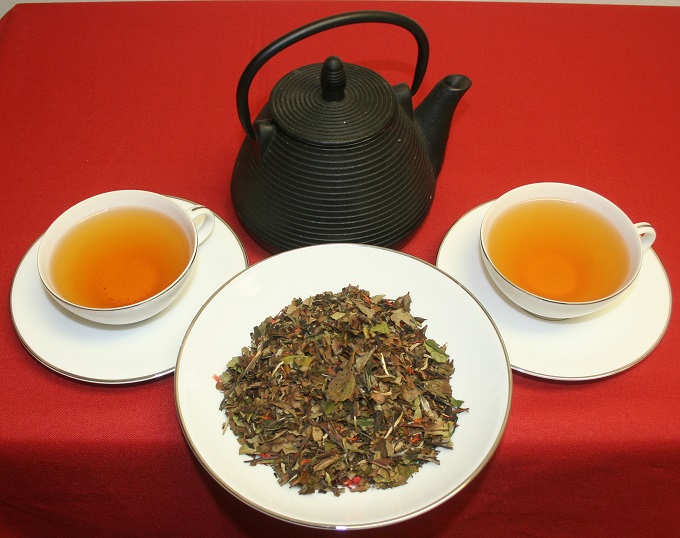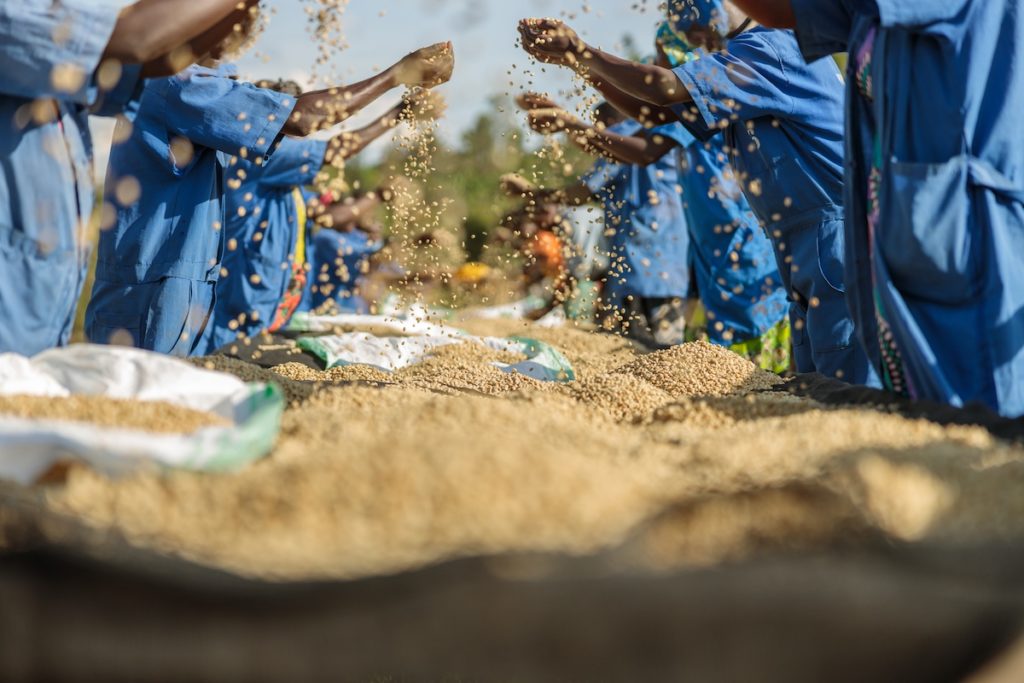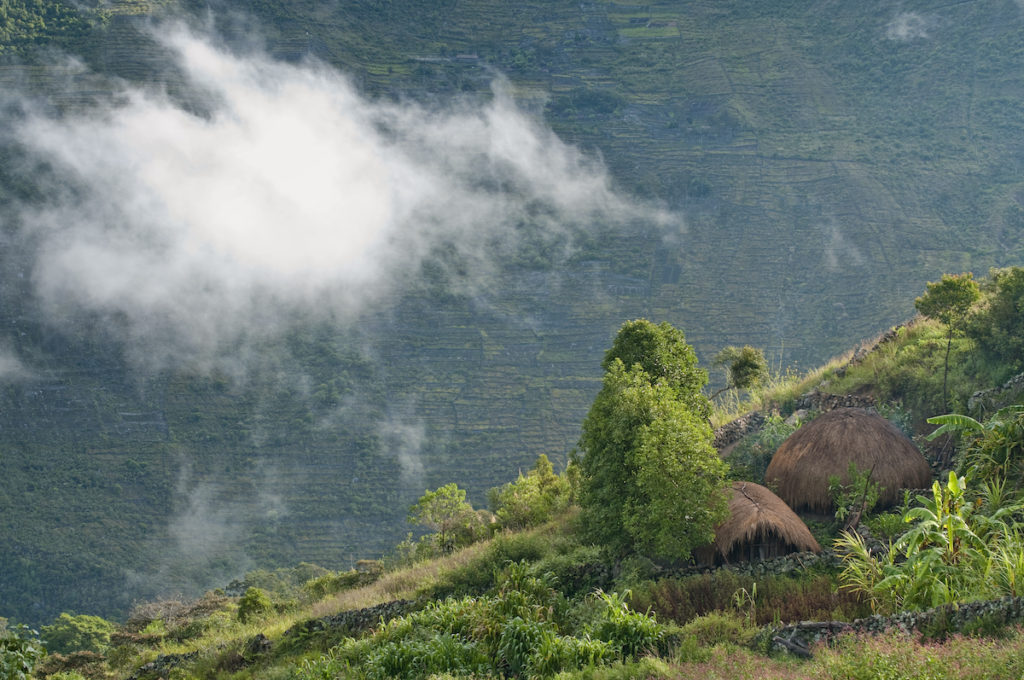Begin with the perfect pot of water. In the ideal cup of tea, the water is almost as important as the leaves. If possible, use water which is clean, fresh, well-aerated, and with a good balance of minerals. Unfortunately, bottled water is generally mineral-free and not well-aerated, leaving it dull-tasting, but tap water which smells of chlorine can really disrupt the subtle aromas of a fine tea. Traditionalists say that the perfect place to get the perfect pot of water is “a naturally flowing spring.”
Go figure, it sounds like even getting water for your tea entails some kind of spiritual journey! It is true that for many tea enthusiasts, the tea experience is sacred, and the utmost respect is given to every part of the process. But rest assured, if you don’t have the perfect pot of water or a gurgling spring outside your kitchen window, you will surely still enjoy your tea. These rules and the following are guidelines for those who strive for that perfect cup, but they will also help the tea-curious begin to understand the tea experience, and what to look for in a superior cup.
Your perfect water needs to be at perfect temperature. It is important to heat your teapot and cups by filling them with boiling water (discard this water). If your vessels are cold, they will throw off the precise optimal steeping temperature. Then heat another pot of water to the optimal temperature for whichever type you are steeping.
Generally, white teas are best at 170 degrees (or less), green teas are best at 180 degrees (or less), Oolong teas are best at 180-200, and black and Pu-Erh teas are best at boiling (212). Use a thermometer, or estimate by letting boiling water cool for 2 minutes to 180 degrees, or 3 minutes to 160 degrees.
And then there is the perfect amount of water, the perfect amount of tea leaves, and the perfect steeping time… but opinions differ widely, by region and taste. We provide guidelines below, but every tea is different, and for many you will need to determine the perfect combo by trial and error – enjoy!
Eastern and Western methods of tea preparation are quite different. We will outline examples of both here, beginning with the more familiar British style. We encourage you to try the Chinese style as well, especially for Green, Oolong and Pu-Erh teas.
Tea leaf quantities are by weight, as volume becomes a tricky variable. In theory, one “teaspoon” equals 2 grams. But only if you are using dense black tea like Earl Grey. A light, large- leafed green tea like our Dragon Well may require up to 2 tablespoons to weigh 2 grams. If you do not have a scale, just estimate 1 teaspoon = 2 grams for denser teas, 1 tablespoon = 2 grams for lighter teas.
How to Steep the Perfect Cup of Earl Grey Tea (British style)
2 grams of tea per 6 ounces (175ml) of water: serves 1
Preheat teapot and cups. Discard this water. Place tea leaves in teapot (or infuser). Pour in fresh boiling water. Close, allow to steep for 3-5 minutes, depending on size of vessel and taste. Remove leaves or pour liquid into another vessel.* Drink immediately, with a squeeze of lemon and a little sugar. Other black teas are usually taken with milk, and some folks like Earl Grey that way too, so we also have instructions for the perfect “London Fog.”
*Note that this method may be used to produce a good cup of tea from any leaves. Adjust the temperature and time to the appropriate type of tea (White: 170 for 3 min, Green: 180 for 2-4 min, Oolong: 180-200 for 3-5 min). White, Green, Oolong, and Pu-Erh teas may be re-steeped, just increase steeping time by 30-60 seconds each time. Most black teas are not recommended for re-steeping, as they turn bitter.
How to Steep the Perfect Cup of Dragon Well Tea (Chinese style)
6 grams of tea per 6 ounces (175ml) of water: serves 2-4
Preheat teapot and cups. Discard this water. Place tea leaves in teapot (or infuser). Prepare water at 170-180 degrees, pour over just enough to cover the leaves, and then pour that out immediately. Blanching the leaves cleans them and uncurls them for maximum infusion. Pour this first batch of water into cups, but then discard it. This keeps cups warm and provides an initial aroma – appreciate it (Chinese and Japanese tea enthusiasts write eloquent poetry about the looks and smells of steamy tea leaves!). Pour hot water into the teapot, cover, and allow the liquid to steep for 15-30 seconds. Enjoy a light and small sample of the unique taste and aroma of this tea. Then re-steep, for 15-30 seconds longer each time.* You may find yourself drinking up to 8 distinctly delicious cups as you savor all the delicate flavors that unfold in each re-steep.
*Note that all Green and White teas excel in this preparation. It is highly recommended for appreciating the complex and aromatic Oolong and Pu-Erh teas. This method is less often used for black teas, though some First Flush teas are so lightly processed that you may enjoy trying them in this way. If you use this method with traditional Black teas, it is extra-important to remember to blanch them before the first steep, to reduce bitterness.

For more information about our different teas, check out our tea blog posts! A couple of intro-level articles overview our offerings and are highly recommended for those just beginning their tea exploration adventures: “Welcome to the Wonderful World of Tea” and “Tea 101: Types of Tea” – more coming soon!




I know nothing about British style steeping of tea, but I have some reservations about the recommendations for Chinese style steeping.
First, I would point out that the pre-heating of the vessel and quick wash, as indicated above, is a very good idea. The duration of the post-wash first steeping, I would suggest, is partially a function of the density of the leaves being used as well as the amount of leaves and temperature of the water. The tighter the roll of the processed leaves, as in a high-quality oolong, for instance, the longer the initial steeping ought to be. More lightly rolled leaves, as in a Dragon Well, for instance, should suffer briefer initial steeping. Exact times vary, but I would work in ranges of 10-20, instead of 15-30, seconds.
I further suggest that the second steep, generally, should be shorted than the first, since the leaves have been awoken, opened a bit and have been cooking (hot and moist) while the first infusion has been poured out, allowed to cool and drunk. The length of the second steep may be about 1/2 to 2/3 the length of the first. The length of subsequent steeps should be gradually increased. Some teas will accept steeping times of up to one minute to release flavors in the 7th, 8th or more brew.
All of this is affected, of course, by the water-to-leaf ratio, size of the pot and the personal preference of the tea meister. I find this approach works for me on a daily basis.